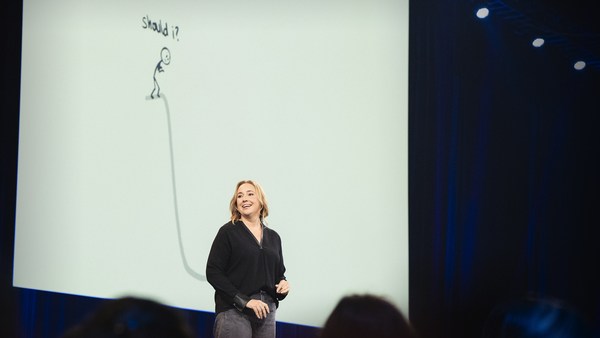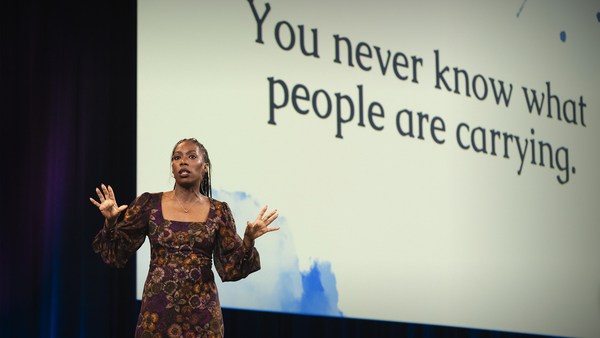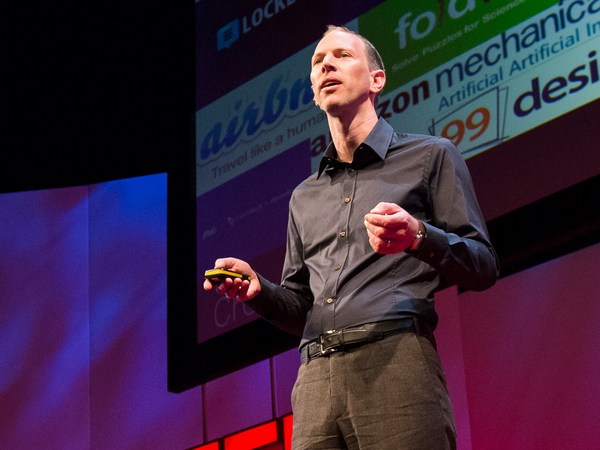How do you feel about going to work? Excited to start the day or kind of dreading it?
We've been hard-wired to believe that work isn't supposed to be enjoyable. Work is work. But here's the thing. In the future, companies will succeed or fail based on how much their people enjoy their work.
Now, when I tell that to business leaders, a lot of them say, "That's great, Rosie, but it's the end of fiscal quarter and the CEO is breathing down my neck because the board is breathing down her neck because our stock price is dropping. Let's talk about enjoying work once we're in a better spot. Or never."
Now I get it. These leaders are right to fixate on business performance. But I've spent the past six years exploring this topic as a people and organization expert at BCG, and the data is clear. Making work more enjoyable pays off big time.
Just look at the top 100 companies to work for in America. Over the last 28 years, their stock returns were more than double their peers'. So instead of asking how can we boost productivity, these leaders should be asking, how can we boost enjoyment? Productivity and profit will follow. So here are my top three tips to make work more enjoyable.
Tip one: double down on joy. Ask yourself, "What do I enjoy most about my work? And how can I do more of that?"
Take Trader Joe's, an American grocery store with a cult following. If you've been to a Trader Joe's, you know it just feels different shopping there. Every employee seems genuinely happy to see you. They want to know what you're doing this weekend and whether you've tried these pumpkin spice Joe-Joe's. It's almost surprising how happy they seem in a stereotypically low-paying, high-turnover retail job. So how does Trader Joe's do it? Well, they know that the fun part of working in retail is chatting up your co-workers and the customers. So they've created this super social environment by purposefully overstaffing their stores.
The result? Overstaffing means employees enjoy their work more, are less likely to feel burnt out, and are less likely to consider quitting. In fact, one in 10 Trader Joe's employees has worked there for over a decade, which is pretty crazy when you consider how expensive it is to replace an employee, not to mention the lost productivity as they learn how to do the job.
But overstaffing doesn't just save Trader Joe's money, it makes them more money, too. Employees have more time to interact with customers and drive spending. If you compare Trader Joe's to its peers, they make 50 percent higher revenue per employee. So doubling down on joy is good for employees, customers and shareholders alike. And it didn't require expensive pay rises or fancy bonuses.
Yes, you need to pay your employees a living wage, but don't make the mistake of thinking more enjoyment only means more money. It doesn't. We all know people who make a ton of money and still loathe their jobs. So get creative. Figure out what it is that you enjoy most about your work and do more of that.
Tip two: eliminate frustrations. My second tip is the opposite. Ask "What's most frustrating about the work I do and how can I do less of that?"
Back in 2020, US department store Neiman Marcus was in pretty dire straits. Employees were quitting at record rates, the pandemic had closed nearly all their stores and by May they were filing for bankruptcy. To survive, they needed to make some serious changes. So they created an option for store associates to serve customers remotely as work-from-home digital stylists.
But here's where things get really interesting. When the world reopened post-pandemic, Neiman Marcus could have easily gone back to their old ways of working. But they know from extensive surveys that flexibility is their employees' number one concern. So while other companies were issuing return-to-work mandates, Neiman Marcus doubled down on flexible work. Now, a store associate might spend some three days a week in-person behind the makeup counter and two days working from home, serving online shoppers. With more people shopping online, it's a win for customers, employees and the company. Staff turnover has dropped by 20 percent. So if you want people to perform at their best, ask what's getting in their way and then design the work to minimize those frustrations.
Tip three: keep experimenting. My final tip is to revisit enjoyment repeatedly. What works well today, might not work a month down the line.
In my job, our teams take a weekly survey about whether we're enjoying our work. And then we review the results together. But we don't spend it poring over pie charts and line graphs. We make it fun by asking questions like, "Which one of these nine kangaroos represents how this week went for you?" And someone might say, “Well, I started out this week as the snuggly joey, safe and sound in his mother's pouch. But then I had a really atrocious client meeting and felt kind of hung out to dry. So by the end of the week, I was like the more feral, possibly rabid kangaroo." It might sound like a silly process for such a serious task, but it works.
We've come up with so many ways to make work more enjoyable, like shifting a morning check-in 30 minutes later so that a team member can drop his kid off at kindergarten. A trivial change for us that made the world of difference to him. So make a habit of talking about enjoying work, and you'll come up with surprising solutions that make work more enjoyable for everyone.
So before you get back to whatever it was that you were doing before you tuned into this talk, I'd love for you to ask, how can I enjoy this more? Because what's enjoyable for you is good for your company too.
Thank you.





